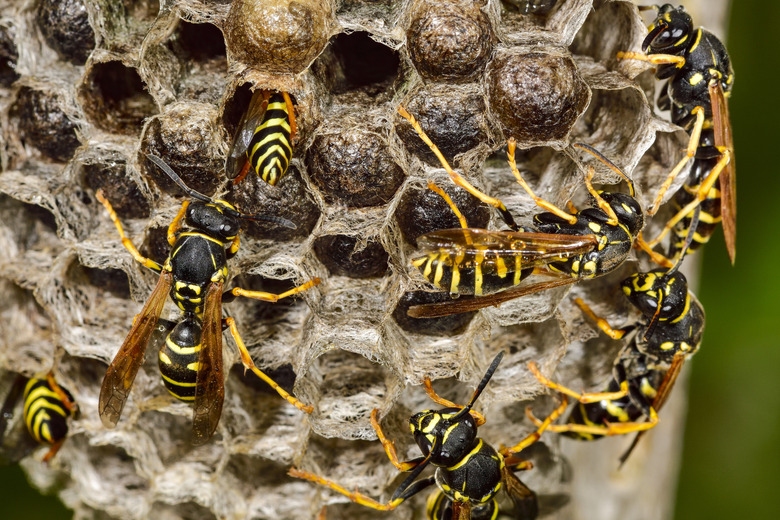What Happens To Wasps In Winter?
Wasps and winter just don't seem to go together. Depending on where you live, there may be snow on the ground in winter or icy winds or pouring rains that would seem to discourage any flying insects from leading an active life. But where are they? Tucked snugly into a nest and dreaming of spring, like the rest of us? Or are they dead?
Wasps in Winter
Wasps in Winter
The motto of wasps is not survival of the fittest; it's survival of the queen. All members of a wasp colony do whatever it takes to keep the queen alive to lay eggs when the weather warms. However, for the rest of the wasps in winter, the outlook isn't good.
Male wasps exist to impregnate the queen wasp, a fertile female charged with keeping the colony going. Some of the male worker wasps are killed off by the cold weather, but many starve to death. Infertile females and old queens also regularly die off as fall turns chilly. The queen wasp finds a warm place to pass the winter and goes into a semidormant state. When the weather warms, she goes in search of a place to lay her eggs.
Long Live the Queen
Long Live the Queen
If you see a solo wasp in your house in winter, it is likely a wasp queen. They often enter a home through a crack somewhere and settle down in a quiet corner, even the fold of a heavy drape, to pass the winter. If the queen dies, the future of the colony goes with her.
If the winter is cold, wasp queens will go into a sort of insect hibernation until spring, when there is enough food for her to stave alive. However, during warm winters, the wasp queen may come out of dormancy early and head into nature too early and starve to death. Assuming she makes it, she searches for a spot to build a new colony, settles in and lays wasp eggs.
Types of Wasps
Types of Wasps
Paper wasps are the most common type of wasp in this country, but they are not the only one. Yellow jackets and red and black hornets are also species in the bigger family of wasps. They are both social wasps, meaning that they live in colonies, not solo. Yellow jackets are easily recognizable by their yellow and black markings. Some hornets are also yellow and black, while others are red.
While paper wasps are fairly docile unless under attack, both yellow jackets and hornets can be very aggressive. If you see a hornet nest in winter, it's a great time to destroy it.
Cite This Article
MLA
Spengler, Teo. "What Happens To Wasps In Winter?" sciencing.com, https://www.sciencing.com/what-happens-to-wasps-in-winter-13405770/. 26 September 2018.
APA
Spengler, Teo. (2018, September 26). What Happens To Wasps In Winter?. sciencing.com. Retrieved from https://www.sciencing.com/what-happens-to-wasps-in-winter-13405770/
Chicago
Spengler, Teo. What Happens To Wasps In Winter? last modified March 24, 2022. https://www.sciencing.com/what-happens-to-wasps-in-winter-13405770/
